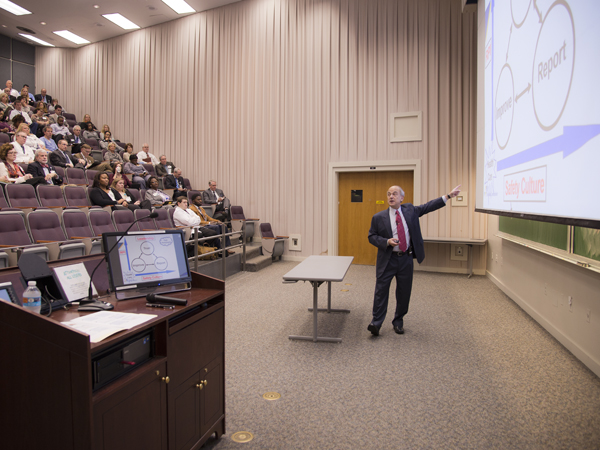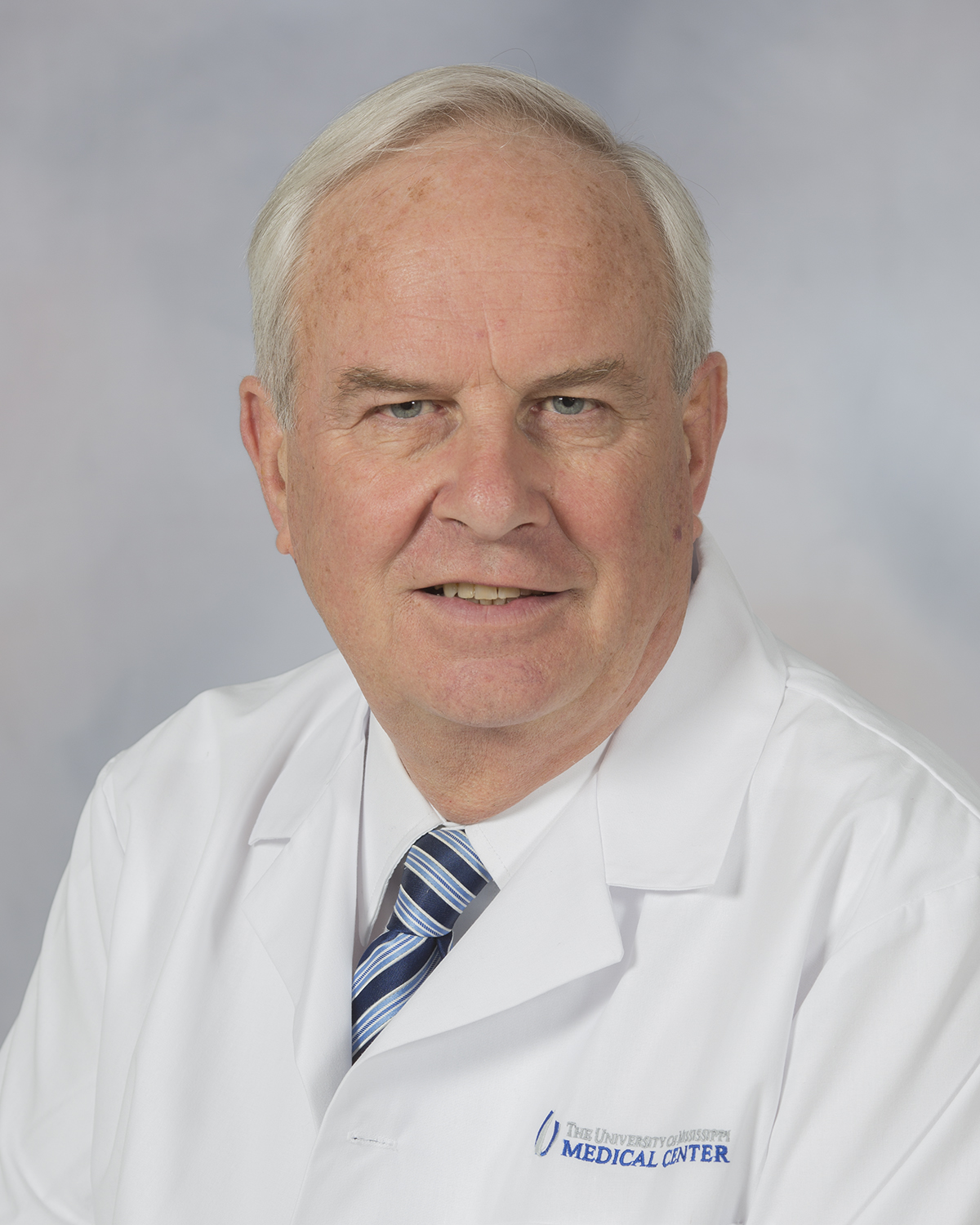Pursuing the goal of zero harm

Published in News Stories on November 19, 2015
If just 40 percent of a hospital's front-line caregivers wash their hands before and after entering a patient's room in an effort to thwart the spread of infection, is raising that number to 60 percent reason to give each other a high-five?
And if someone on a transplant surgical team noticed that a patient's healthy left kidney was about to be removed instead of the diseased kidney on the right, should catching such a close call be considered a victory?

Chassin
“Someone saved the day, but let's not celebrate too hard,” Dr. Mark Chassin, president and chief executive officer for the Joint Commission, told University of Mississippi Medical Center caregivers and leadership team members Monday.
Chassin visited the Medical Center in coordination with the office of Chief Medical Officer Dr. Michael Henderson to bring home the critical need for quality improvement and error prevention at all hospitals. The Joint Commission is the nation's leading accrediting body in health care.
He spoke at Grand Rounds about high reliability in health care before meeting with leadership and clinical chairs and taking a campus tour that included the Emergency Department, the surgical ICU and Mississippi MED-COM.
Chassin broke down the elements of high reliability in health care, which means consistently giving all patients quality, safe care. Organizations can achieve that gold standard through improving their effectiveness, efficiency, customer satisfaction, compliance, culture and documentation.

Dr. Mark Chassin, president and CEO of The Joint Commission, speaks on high reliability in health care during Grand Rounds.
It's not enough, though, to talk about improvements. Chassin explained to a large gathering in Amphitheater R-153 how to chase the goal of zero patient harm by changing cultures and processes. Tools to do that are available from another organization led by Chassin, the Joint Commission Center for Transforming Healthcare. It strives to transform health care into a high reliability industry by developing effective solutions to health care's most critical safety and quality problems.
“We need to think and act differently if we want to get results that are unprecedented,” Chassin said. Nationwide, he said, “we set fire to patients in operating rooms 600 times a year. There's been an avalanche of catastrophic adverse events that are truly 'no' events,” such as performing surgery on the wrong body part.
“It happens over and over,” he said of incorrect medication distribution, failed communication on transfer of care from one front-line staff to another, and failed hand hygiene leading to infection. “We have to look at how we've been approaching this. What we're doing is not getting us close enough to zero.”

(From left) Dr. Mark Chassin, CEO and president of The Joint Commission; Dr. Thomas Prewitt; and Dr. Michael Henderson chat with SICU nurses.
Take a page from some of the top industries outside of health care with impressive safety and quality improvement programs, Chassin said. “Their record of safety is amazing. They don't have 150 safety projects going on to be safe. Zero harm is a natural byproduct of what they do every day. We need to produce zero harm in how we take care of our patients.”
To achieve high reliability, he said, there must be a leadership commitment to zero harm and a change in a health-care organization's culture that allows for effective process improvements and a no-fear zone for doing just that. That includes eliminating intimidating behaviors that front-line staff often say come from physicians, and holding everyone accountable for consistent adherence to safe practices.
“Would you want to call a provider with a question if that person yelled at you last time?” Chassin said. Common intimidating behaviors are the refusal to answer questions and the use of a condescending tone, he said. Such behaviors, he said, keep caregivers from questioning or calling attention to unsafe practices or errors happening around them.
“The connection to safety is here,” Chassin said. “It results in caregivers starting to engage in unsafe practices. If front-line workers don't trust each other, and trust management to fix problems, then they're not going to tell them about it. And nothing erodes trust more than if a front-line group knows a certain group can have safety errors, and nothing happens.”
Aiming for zero, he said, “changes what you are willing to accept as improvement.”

Henderson
Chassin's Grand Rounds talk “was timely reinforcement of why quality improvement is the No. 1 strategic agenda at UMMC,” Henderson said. “Highlighting why health care lags behind other high reliability industries, he laid out a path that his Joint Commission team has been developing over the past eight years that is beginning to achieve major, sustainable improvement in safety and better outcomes for patients.
“Leadership, at all levels, committed to making improvement is essential,” Henderson said. “Chassin's message challenges caregivers to think differently, and inspires them to drive for zero harm and better outcomes by making such work part of what they do every day.”


